On this page you will find information on the:
Alligator Weed Duck Weed Floating Algae Salvinia Smart Weed Water Hyacinth
Alligator Weed
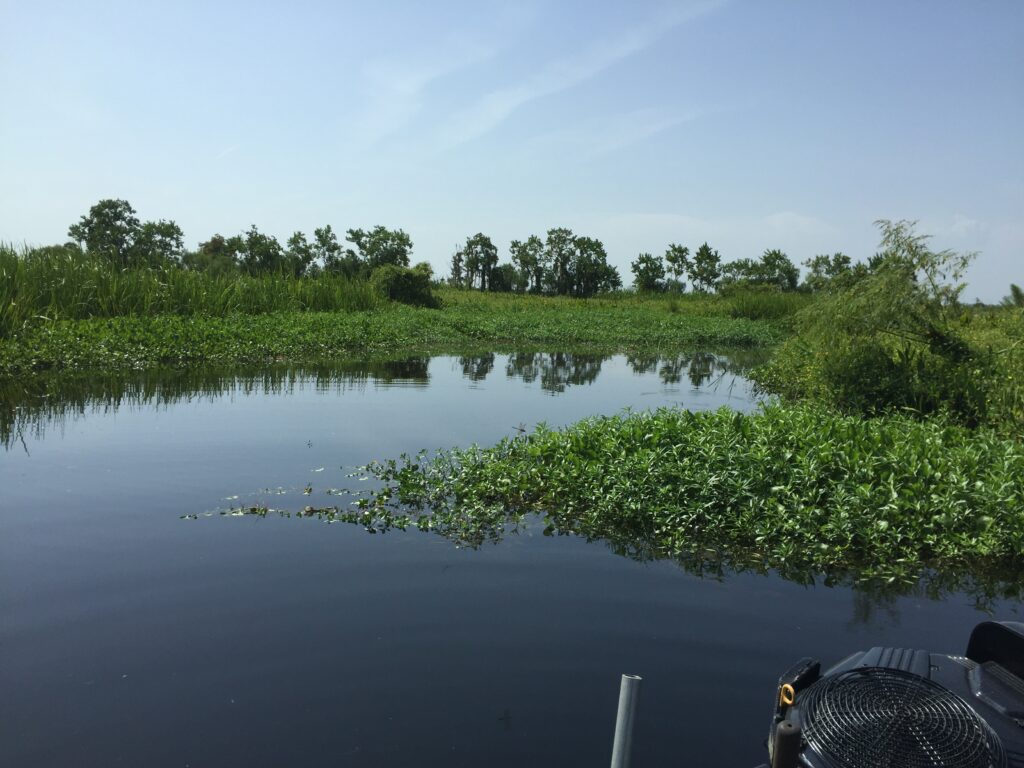
Common Name: Alligator Weed
Scientific name: Alternanthera philoxeroides
Type: Herb
Habitat: fresh-waterways, wetland margins
On both sides of Greenway
Non-native
Perennial
Obnoxious Alligatorweed (Alternanthera philoxeroides) was accidentally imported to the US from South America in ship’s ballast-water around 1900 and immediately went about infesting coastal waterways from North Carolina to Texas. The stuff spreads out to cover a body of freshwater in mats so dense no sunlight gets to the plants and animals underneath and humans and wildlife can’t get through it. It will even crawl up on land where the soil is wet enough. Chopping it up doesn’t necessarily work because it can grow from the fragments. All it takes to infest a lake is to have someone carelessly carry some of it in on their boat trailer. One lake was even dried up to kill a bad infestation until it was determined there were enough seeds left to re-infest the lake.
In the 1970s some scientist went to where it came from to find out what eats and kills it (leaf beetles, thrips and snout moths). They declared the weed could now be eradicated. Unfortunately, that’s not the way it worked out and controlling the weed may require experimentation – trying the bugs, applying a range of aquatic herbicides and even using goats. Another factor is always money; state and local government budgets sometimes can’t keep up with it and control can only be spotty and/or infrequent.
Duck Weed
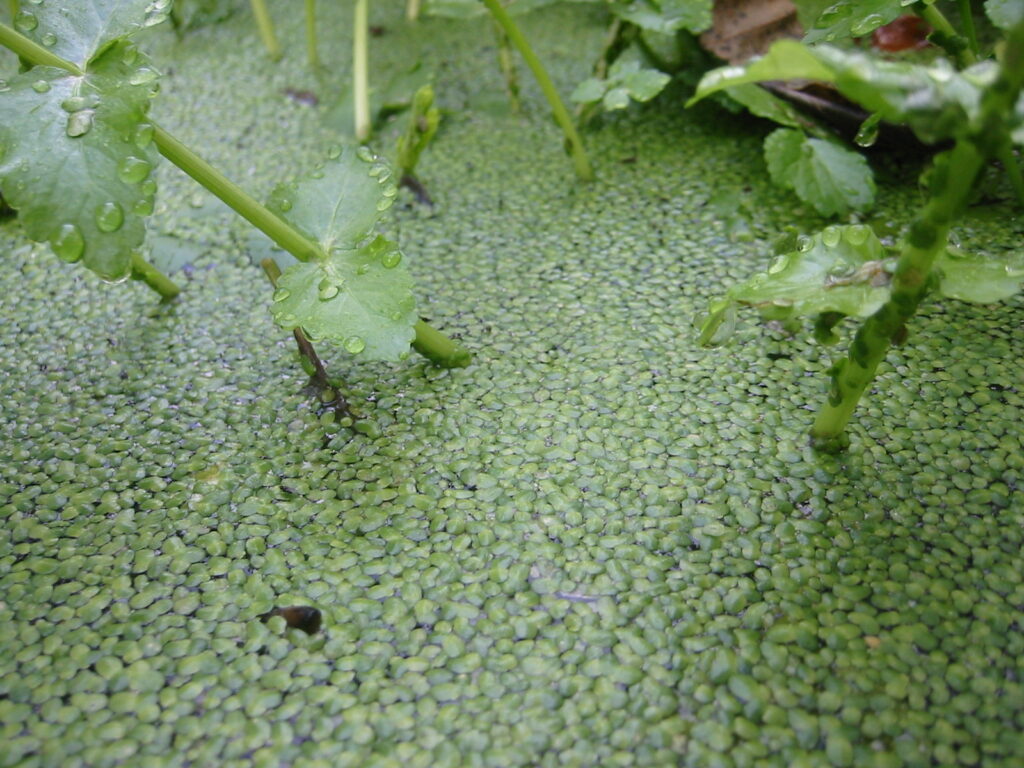
Common Name: Common Duckweed
Scientific name: Lemna minor
Type: Floating aquatic
Habitat: swamp/ditch/waterway
On both sides of the Greenway
Native
Perennial
This simple, elegant design: one small floating leaf and a wispy, dangling root, are all you need to make this highly successful floating aquatic plant. They’re one of the smallest flowering plants with microscopic blossoms buried unseen inside, yet attract small pollinators like minute insects and spiders. There are only nine species in North America and green Common Duckweed is the most popular.
Two of the most significant characteristics of the Duckweeds are their great uptake of nutrients like phosphorous and nitrates and their ability to multiply quickly, so much so they can mass in a narrow waterway and effectively block passage. They also have diverse uses as food for waterfowl, fish and livestock and as a cleansing agent in polluted waters. They are used for this purpose in Ponchatoula’s huge sewage treatment ponds just up the road.
Floating Algae
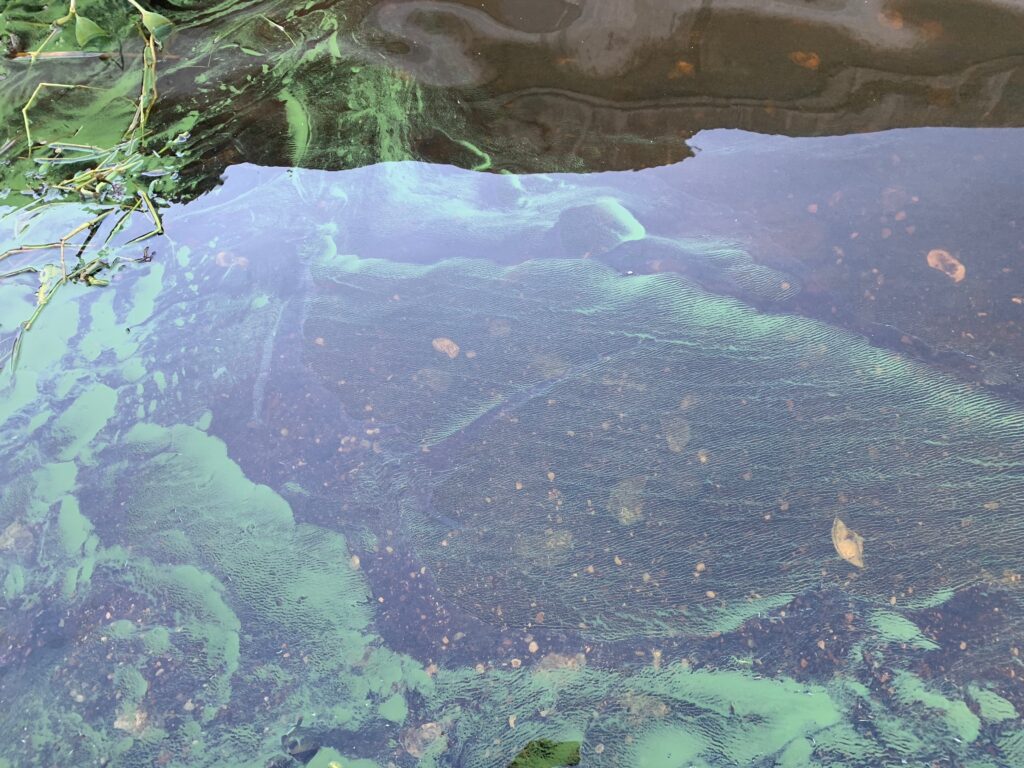
Algae blooms are usually caused by excessive nutrients (usually nitrogen and phosphorus from sewerage and fertilizer) in a waterbody that prompts these unicellular microscopic organisms to multiply rapidly. Certain types of algae can cause acute problems from the toxins they contain. Another secondary problem can occur if all the rotting algae bodies are consumed by enough over-active bacteria to cause an extreme depletion of oxygen which causes fish and other aquatic animals to asphyxiate and die. The springtime introduction of nutrient-laden Mississippi River water from the Bonnet Carre Spillway into the warming waters of Lake Pontchartrain and the notorious offshore “Dead Zone” in the Gulf are familiar examples.
The accompanying photo of algae on the water was taken at North Pass in mid October, long after the summer’s Spillway opening. There had been no recent heavy rain to introduce nutrient runoff and this site is at a considerable distance from typical nutrient sources like wastewater outfalls. So what might have caused it? Something often seen in shallow waterbodies can be caused by fall cold fronts that suddenly cool the surface water. This sinks and quickly displaces the warmer water below, causing an instability that roils-up the bottom and releases enough nutrients for the algae to bloom.
Salvinia
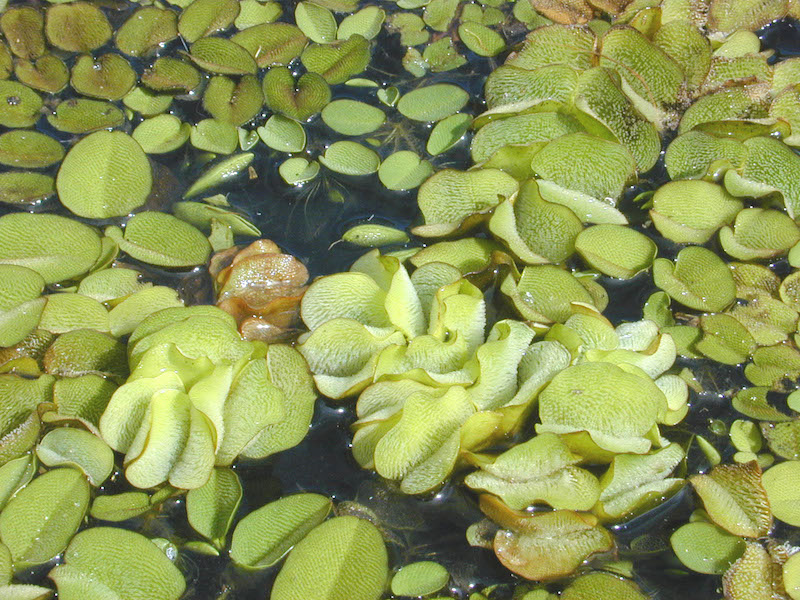
BIG SALVINIA-
Common Names: Salvinia, Giant Salvinia, Watermoss, Water Fern, the Green Monster
Scientific name: Salvinia molesta
Type: Aquatic fern
Habitat: swamp/ditch/waterway
On both sides of the Greenway
Non-native (Brazil)
Annual
LITTLE SALVINIA-
Common Names: Common Salvina, “Water Spangles”
Scientific name: Salvinia minima
Type: Aquatic fern
Habitat: waterways/ditches
On both sides of the Greenway
Non-native
Annual
The Brazilian Sylvinia molesta and his little Central American brother Sylvinia minima (both named after a 17th Century Italian scientist) have been very successful in coastal Louisiana; minima since the 1920s and molesta since 1998. They’ve spread rapidly and thoroughly, clogging up whole lakes and acres of still-water areas under dense mats that choke-off sunlight, nutrients, navigation, habitat and create oxygen-depleted water.
The Louisiana Department of Wildlife and Fisheries has sworn a “fatwa” against the plant and has used mechanical, chemical and biological methods to eradicate it including broadcasting salvinia-eating weevils, which were recently used to clear the I-55 Borrow Canal. Floating booms have been used to round it up to concentrate some of these applications. They’ve also tried “drawdowns” where water is removed from a lake to leave the salvinia to dry and die in the sun.
Unfortunately, since the plants reproduce asexually, sprout from their severed parts, hide in out-of-the-way places and travel easily by boat trailer and even in a duck’s feathers, they always find a way to bounce back. So far, no magic bullet has been found to completely defeat them.
Smartweed
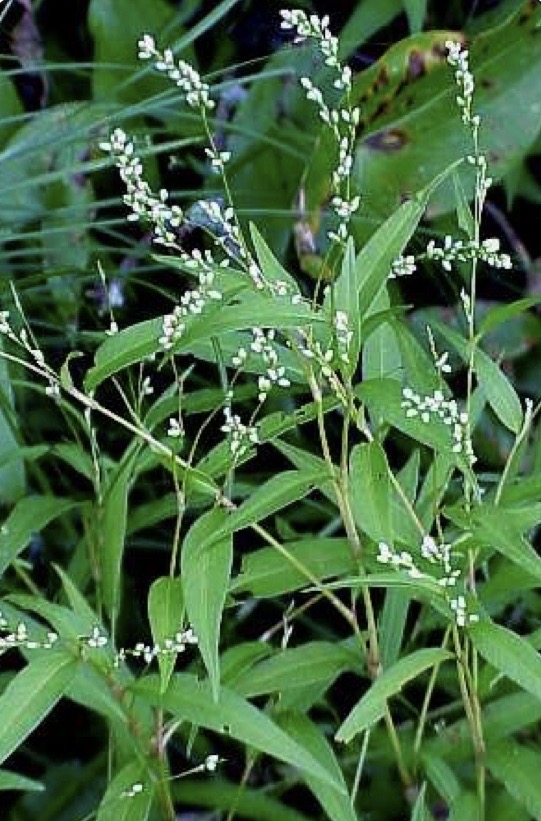
Common Names: Smartweed, Dotted Smartweed, Knotweed
[Scientific name: Polygonum punctatum
Type: Herb/Forb/Grass
Habitat: ditches/waterway banks/undrained areas
On both sides of the Greenway
Native
Perennial
Smartweed is a native grass that grows along the edges of waterways in marshy areas. Its underwater parts are a hunting ground for fish, ducks and invertebrates and its seeds feed waterfowl, smaller birds and mammals.
Water Hyacinth
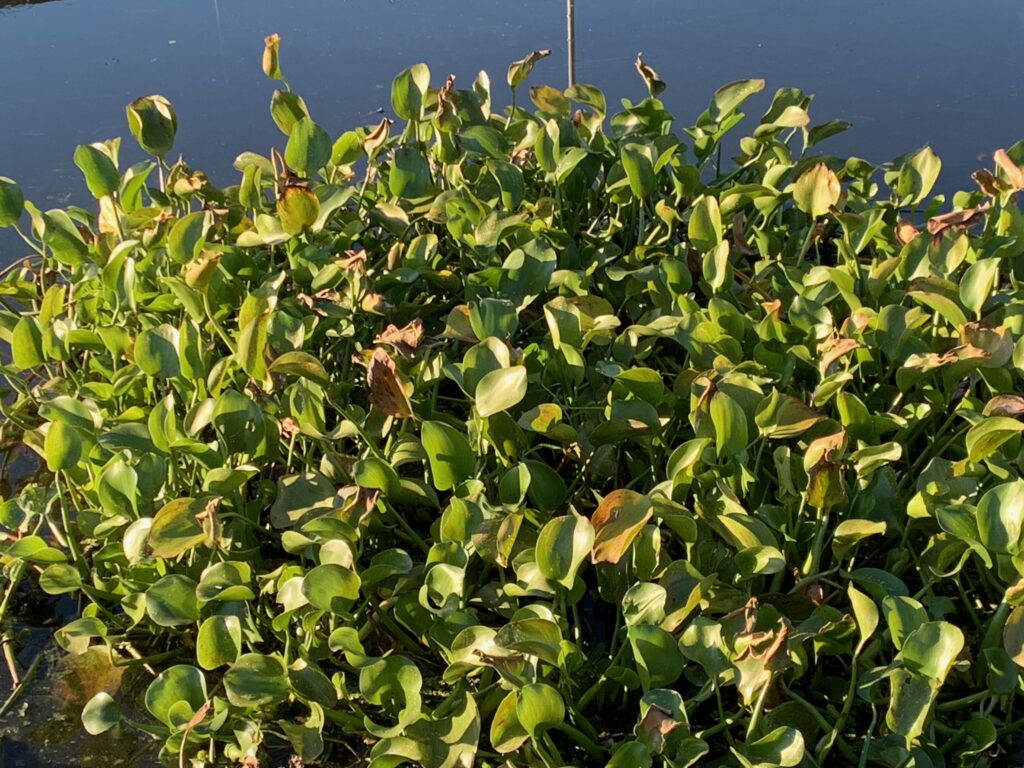
Common Name: Water Hyacinth
Scientific name: Eichhornia crassipes
Type: Floating aquatic herb
Habitat: fresh-waterways, wetland margins
On both sides of Greenway
Non-native
Perennial
The story of the introduction of this South American plant to Louisiana is well known. It was imported to decorate the ponds of the Japanese Pavilion at the 1903 Cotton Exposition in New Orleans with its pretty, floating lavender blossoms. They got loose, loved it here and are now clogging up waterways across the coastal zone and up into Northern Louisiana.
The accompanying photographs show some of the extent of this year’s infestation in the Manchac area. This fluctuates from year to year. Fortunately, freezing weather will kill them off but this will leave massive amounts of rotting detritus on the bottom which helps create hypoxic conditions as decomposing bacteria consume much of the oxygen in the water. Minimal or non-existent winter freezes leave a portion of last year’s crop and a head-start on the next season’s infestation to where the plant can completely clog up narrow waterways.
